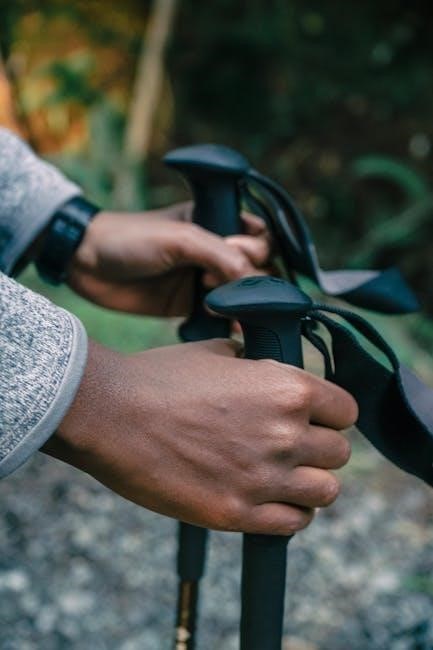
1․1․ What is a TLSO Brace?
A TLSO (Thoracic-Lumbar-Sacral Orthosis) brace is a custom-molded plastic device designed to stabilize and protect the thoracic, lumbar, and sacral regions of the spine․
1․2․ Purpose and Benefits
It immobilizes the spine during healing, restricts movement in injured areas, and controls pain, providing essential support for recovery after spinal surgery or injury․
A TLSO (Thoracic-Lumbar-Sacral Orthosis) brace is a custom-molded plastic device designed to provide immobilization and support for the thoracic, lumbar, and sacral regions of the spine․ It is typically used after spinal surgery, injury, or to manage conditions like scoliosis․ The TLSO brace extends from the chest down to the pelvis, limiting spinal movement to promote healing and stability․ Its rigid design ensures proper alignment and protection, making it an essential tool for recovery and rehabilitation․
A TLSO brace is primarily used to immobilize the spine, allowing proper healing after surgery or injury․ It restricts harmful movements, reducing pain and discomfort․ The brace provides essential stability, ensuring spinal alignment and preventing further damage․ Its rigid design offers consistent support, while its adjustability ensures a comfortable fit․ The TLSO brace is particularly effective for managing conditions like scoliosis, promoting recovery, and enhancing patient mobility․ By limiting motion, it protects the spine during the critical healing process, making it an indispensable tool for achieving long-term spinal health and stability․
Applying the TLSO Brace
Apply the TLSO brace while lying down․ Log roll onto your back to position the brace, then secure it with straps for a proper fit, ensuring stability and comfort․
2․1․ Step-by-Step Instructions
Lie down to apply the TLSO brace, allowing gravity to help align your spine․ Log roll onto your back to position the brace correctly․
Place the back portion of the brace first, ensuring it fits snugly between your hip bones and ribs․
Fasten the middle straps to secure the brace in place, then tighten the side straps for added stability․
Adjust the shoulder straps to ensure comfort and proper fit, avoiding overtightening․
Double-check all straps to ensure they are snug but not restrictive, following your healthcare provider’s specific instructions․
2․2․ Tips for Proper Application
Ensure proper positioning by lying down to apply the TLSO brace, allowing gravity to align your spine naturally․
Log roll onto your back to place the brace, ensuring it fits snugly between your hip bones and ribs for optimal support․
Fasten the middle straps first to hold the brace in place, then tighten the side straps gradually for a secure fit․
Always tighten straps evenly to avoid uneven pressure and ensure comfort․
Check the fit regularly to prevent restrictive movement while maintaining necessary immobilization․
Consider having assistance, especially for initial applications, to ensure the brace is applied correctly and safely․
Removing the TLSO Brace
To remove the TLSO brace, start by replacing Pull Tabs B to the ready position․ Lay the brace flat and pull both Wings A outward to reset the tightening mechanism․ Detach the pull tabs and adjust compression by loosening the straps for safe removal․
3․1․ Safe Removal Techniques
To safely remove the TLSO brace, start by replacing Pull Tabs B to their ready position․ Lay the brace on a flat surface and gently pull both Wings A outward to reset the tightening mechanism․ Loosen the straps progressively, beginning from the bottom and moving upward to avoid sudden movement․ If discomfort occurs, adjust slowly or seek assistance from a caregiver․ Ensure the brace is removed without forcing or jerking, as this could cause injury or misalignment․ Always follow the manufacturer’s guidelines for proper removal techniques to maintain spinal stability and safety․
3․2․ Post-Removal Care
After removing the TLSO brace, inspect the device for wear and tear․ Clean the brace using mild soap and lukewarm water, avoiding harsh chemicals or abrasive materials․ Allow it to air dry completely before storage․ Store the brace in a cool, dry place, away from direct sunlight, to maintain its structural integrity․ Regularly check for any signs of damage or deformation and consult your healthcare provider if issues arise․ Proper post-removal care ensures the brace remains effective for future use and maintains hygiene standards․
Wearing Instructions
Wear the TLSO brace as directed by your healthcare provider․ Apply it while lying down to use gravity for proper alignment․ Ensure a snug, comfortable fit without restricting breathing or causing discomfort․ Adjust straps as needed and wear it for the prescribed duration to support spinal stability and promote healing․
4․1․ Daily Wear and Comfort
Wear the TLSO brace daily as prescribed, ensuring proper fit and comfort․ Apply it while lying down to utilize gravity for optimal alignment․ Loosen straps before putting it on and tighten gradually․ Avoid tight clothing that may cause irritation․ Check for redness or discomfort and adjust as needed․ Remove the brace for short breaks if approved by your healthcare provider․ Maintain good posture to enhance support and minimize strain․ Clean the brace regularly to prevent odor and maintain hygiene․ Ensure the brace does not restrict breathing or cause numbness․ Adjust straps throughout the day for consistent comfort and support․
4․2․ Adjusting for Fit
Adjusting the TLSO brace ensures a snug, comfortable fit without restricting movement or breathing․ Start by loosening all straps before putting on the brace․ Tighten the middle straps first to secure the brace in place, then proceed to the bottom and top straps․ Ensure the brace wraps firmly around the abdomen, with the right side overlapping the left for optimal support; If adjustments are difficult, seek assistance from a caregiver or healthcare provider․ Regularly check the fit to avoid skin irritation or discomfort, and ensure the brace does not feel overly tight or restrictive․ Proper adjustments maximize the brace’s effectiveness and comfort during wear․
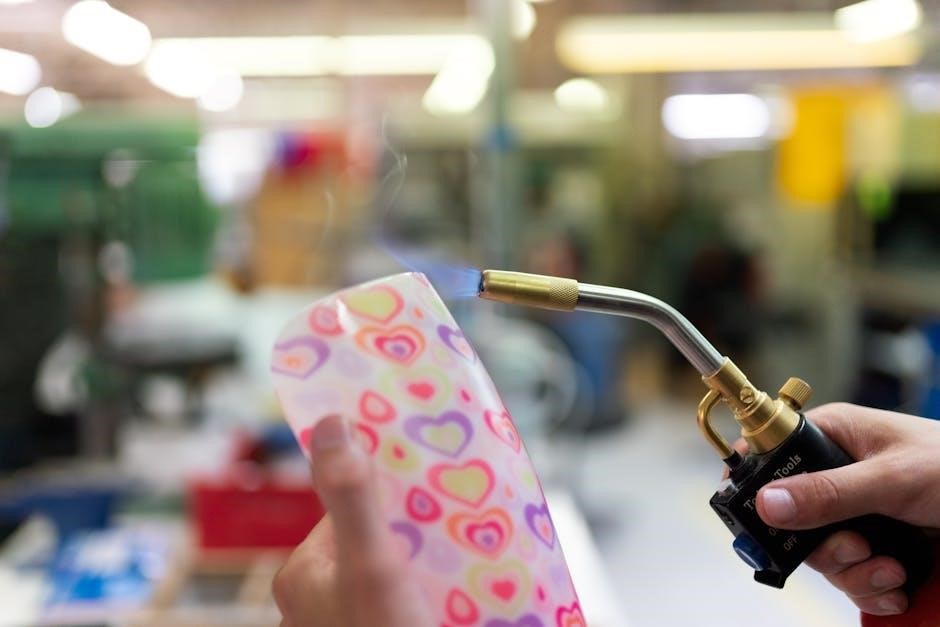
Care and Maintenance
Regular cleaning with mild soap and water is essential․ Avoid harsh chemicals․ Dry thoroughly after cleaning․ Store in a cool, dry place when not in use․ Inspect for wear and tear regularly to ensure optimal function and longevity․
5․1․ Cleaning the Brace
Use mild soap and warm water to clean the TLSO brace․ Gently scrub with a soft cloth, avoiding harsh chemicals or abrasive materials․ Rinse thoroughly and pat dry․ Avoid direct sunlight or heat to prevent warping․ Allow the brace to air dry completely before storing or wearing․ Regular cleaning prevents bacterial buildup and maintains hygiene․ Inspect for wear or damage during cleaning to ensure proper function and longevity․ Always follow the manufacturer’s cleaning instructions for specific materials․ Proper care ensures the brace remains effective and comfortable for extended use․
5․2․ Storage Tips
Store the TLSO brace in a cool, dry place away from direct sunlight․ Avoid folding or bending the brace, as this may damage its structure․ Place it on a flat surface or use a storage case provided by the manufacturer․ Ensure the brace is completely dry before storing to prevent moisture buildup․ Keep it out of reach of children and pets․ Proper storage maintains the brace’s integrity and ensures it remains ready for use when needed․ Follow these tips to extend the lifespan of your TLSO brace and preserve its effectiveness;

When to Wear the TLSO Brace
Wear the TLSO brace after spinal surgery or injury, during activities that may strain the spine, and as directed by your healthcare provider for optimal support and protection․
6․1․ Duration Guidelines
Typically, wear the TLSO brace for 16-23 hours daily, removing it only for hygiene or as advised․ Duration depends on the severity of injury or surgery, with gradual weaning as healing progresses; Consistent use ensures proper spinal stabilization and supports recovery․ Always follow specific guidelines provided by your healthcare provider to avoid overuse or misuse of the brace․
6․2․ Activity-Specific Usage
Wear the TLSO brace during activities that involve bending, lifting, or twisting to ensure spinal stability․ Avoid heavy lifting or strenuous exercises without medical approval․ Sit in a firm, high-backed chair to maintain proper posture․ When lying down, use a supportive mattress and avoid sleeping on your stomach․ Activities requiring extreme spinal movement should be avoided to prevent injury․ Always consult your healthcare provider for activity-specific guidance tailored to your condition and recovery needs․
Adjusting the TLSO Brace
Adjust the TLSO brace using the straps to ensure a snug, comfortable fit․ Professional tuning may be required for optimal support and alignment․
7․1․ Straps and Fit Adjustments
Adjust the TLSO brace straps to achieve a snug fit, ensuring proper spinal alignment․ Start by loosening all straps, then tighten them sequentially, beginning from the bottom and moving upward․ This ensures even pressure distribution and prevents discomfort․ If the brace feels too tight or restrictive, slightly loosen the straps․ Regular adjustments may be necessary to accommodate changes in posture or body shape․ Always ensure the brace is snug but not constricting to promote healing and comfort․
7․2․ Professional Tuning
Regular professional tuning by an orthotist ensures optimal fit and functionality of the TLSO brace․ During follow-ups, the orthotist may adjust the straps, panels, or padding to accommodate changes in your condition or body shape․ They will also inspect the brace for wear and tear, making necessary repairs to maintain its structural integrity․ Professional tuning is crucial for ensuring the brace continues to provide adequate support and alignment, promoting effective healing and preventing complications․
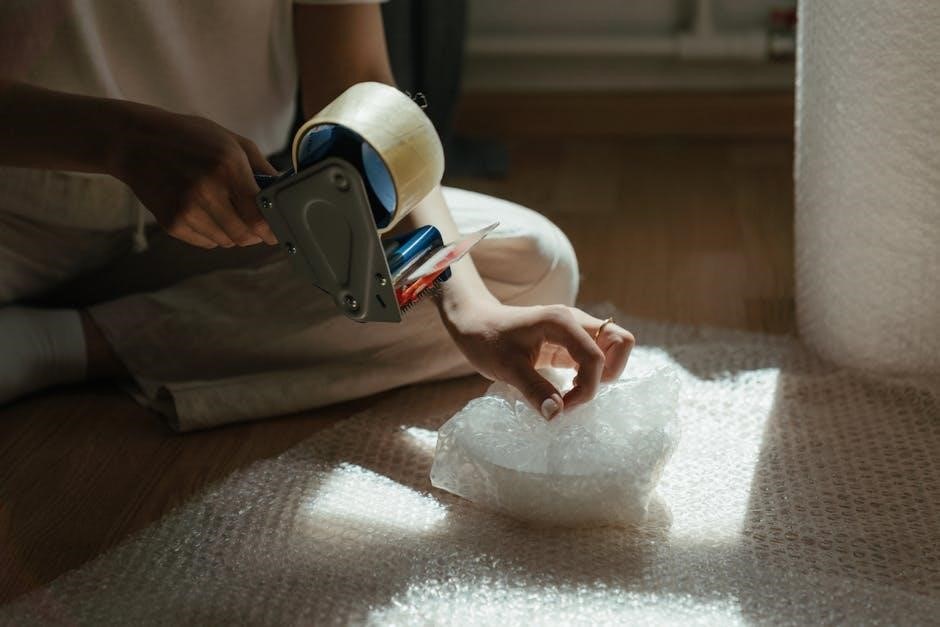
Skin Care and Monitoring
Regularly inspect skin for redness or irritation․ Clean the brace with mild soap and water, ensuring it dries completely to prevent bacterial growth․
Monitor skin health daily, especially under pressure points․ Report any discomfort or skin issues to your orthotist for timely adjustments or interventions․
8․1․ Preventing Irritation
To prevent skin irritation, wear breathable, non-synthetic clothing under the TLSO brace․ Avoid tight or abrasive fabrics that may cause friction․ Ensure the brace fits properly and isn’t overly tight, as this can lead to discomfort․ Use padding or cushioning where necessary to reduce pressure points․ Regularly clean and dry the brace to prevent bacterial growth, which can irritate the skin․ Inspect the skin daily for redness or soreness, and adjust the brace as needed․ If irritation persists, consult your orthotist for adjustments or alternative solutions․
8․2․ Monitoring Skin Health
Regularly inspect the skin under the TLSO brace for signs of irritation, redness, or blisters․ Remove the brace periodically to allow the skin to breathe and check for any unusual changes․ Wash the skin gently with mild soap and water to maintain hygiene․ If you notice persistent redness, swelling, or discomfort, contact your healthcare provider or orthotist promptly․ Monitoring skin health ensures early detection of potential issues, preventing more serious complications․

Precautions and Activities to Avoid
Avoid twisting, bending, or heavy lifting while wearing the TLSO brace․ Sit in a firm, high-backed chair and minimize activities that strain your back․
9․1․ Restricted Movements
Wearing a TLSO brace requires avoiding certain movements to ensure proper healing and spinal protection․ Activities such as twisting, bending, or heavy lifting should be avoided, as they can strain the spine․ Patients should also refrain from sudden movements or prolonged sitting in unsupported positions․ The brace is designed to limit excessive motion, so adhering to these restrictions is crucial for maximizing its effectiveness and preventing further injury or discomfort․ Always follow your healthcare provider’s specific guidelines for activity limitations while wearing the TLSO brace․
9․2․ Safety Measures
While wearing the TLSO brace, it is essential to follow specific safety measures to prevent complications․ Avoid heavy lifting, bending, or twisting, as these actions can compromise spinal stability․ Use a firm, high-backed chair for sitting to maintain proper posture․ Do not engage in activities that require excessive strain or flexibility․ Regularly inspect the brace for damage or wear and tear․ If discomfort or difficulty arises, consult your healthcare provider promptly․ Adhering to these safety guidelines ensures the brace functions effectively and supports your recovery safely․

Follow-Up and Monitoring
Regular follow-up appointments with your healthcare provider are crucial to monitor progress and ensure the TLSO brace fits properly and functions effectively throughout your recovery․
10․1․ Scheduled Check-Ups
Regular follow-up appointments with your healthcare provider are essential to ensure the TLSO brace fits properly and functions effectively․ During these check-ups, your doctor will assess your progress, monitor the brace’s fit, and make any necessary adjustments․ These visits also provide an opportunity to address any discomfort or issues you may be experiencing․ Scheduled check-ups help prevent complications and ensure the brace continues to support your recovery effectively․ Consistency in attending these appointments is crucial for optimal outcomes and long-term spinal health․
10․2․ Progress Tracking
Regularly monitoring your progress while wearing the TLSO brace is crucial for ensuring its effectiveness․ Your healthcare provider will use imaging studies and physical exams to assess spinal alignment and healing․ They will also track any changes in pain levels, mobility, and overall comfort․ Patient feedback is vital for identifying potential issues early․ By documenting improvements or challenges, your treatment plan can be refined to better support your recovery․ Consistent progress tracking ensures the brace is meeting its intended goals and adjustments are made as needed․

Troubleshooting Common Issues
Common issues with TLSO braces include skin irritation, discomfort, or improper fit․ Address these by adjusting straps, ensuring proper alignment, and consulting your orthotist for corrections․
11․1․ Addressing Discomfort
Discomfort while wearing a TLSO brace is common but can be managed․ Check for proper fit and alignment, as improper positioning often causes irritation․ Loosen or adjust straps if too tight, and ensure the brace is not shifted․ Use padding or dressings on sensitive areas to reduce friction․ Monitor skin health and avoid tight clothing that may exacerbate discomfort․ If pain persists, consult your orthotist for adjustments or modifications to the brace․ Regular checks and proper fit are key to minimizing discomfort and ensuring effective support;
11․2․ Repair and Maintenance
Regular maintenance is crucial for the longevity and effectiveness of a TLSO brace․ Inspect the brace daily for signs of wear, such as frayed straps or cracks in the plastic․ Clean the brace with mild soap and water, avoiding harsh chemicals that may damage materials․ For repairs, contact a professional orthotist to ensure proper fixes and maintain the brace’s integrity․ Avoid attempting DIY repairs, as this can compromise the brace’s structural support․ Schedule periodic check-ups with your orthotist to address any issues promptly and ensure optimal function․
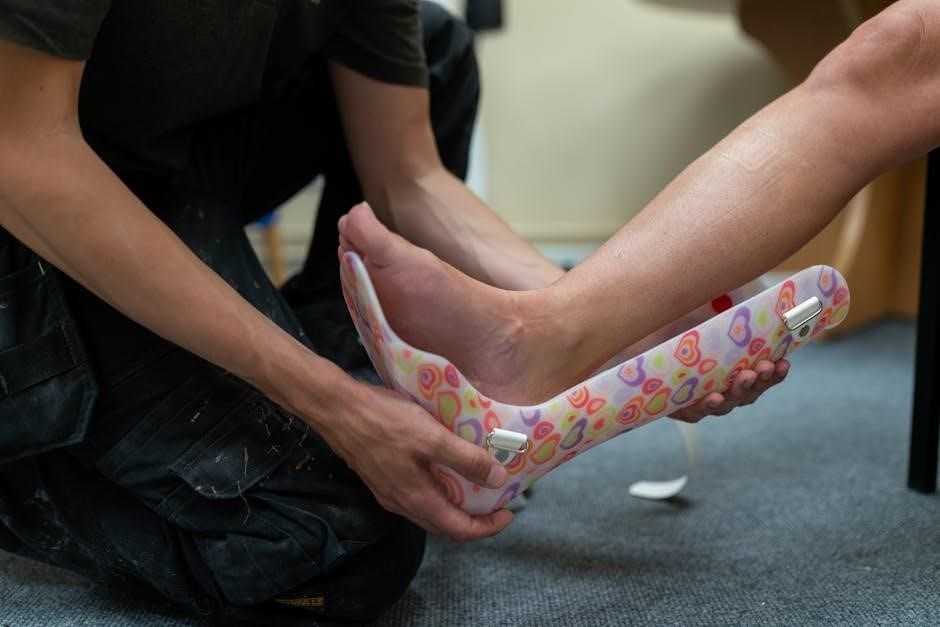
Emergency Removal Procedures
In urgent situations, loosen all straps and carefully remove the TLSO brace to avoid further injury․ Seek immediate medical attention if discomfort or damage occurs during removal;
12․1․ Urgent Situations
In urgent situations, such as severe pain, difficulty breathing, or inability to remove the TLSO brace, remain calm and carefully loosen all straps․ Do not force removal, as this could worsen injury․ Gently lift the brace away from the body, ensuring no additional strain is placed on the spine․ If discomfort persists or removal is not possible, seek immediate medical assistance․ Always prioritize spine stability and avoid sudden movements during emergency removal procedures․
12․2․ Post-Emergency Care
After emergency removal of the TLSO brace, inspect the device for damage and store it safely․ Contact your orthotist or healthcare provider to assess the brace and schedule a follow-up․ Monitor skin condition for irritation or pressure sores and apply any prescribed treatments․ Resume normal brace usage only after professional approval․ Maintain all post-removal care instructions to ensure proper healing and prevent further complications․
Emotional and Psychological Impact
Wearing a TLSO brace can cause emotional challenges, such as frustration or anxiety due to limited mobility and lifestyle changes․ A strong support system and counseling can help patients cope effectively․
13․1․ Coping Strategies
Coping with a TLSO brace involves emotional and mental adjustments․ Patients can benefit from seeking support groups or counseling to address feelings of frustration or anxiety․ Staying positive and focusing on recovery goals helps maintain motivation․ Educating oneself about the brace’s purpose and benefits can also reduce anxiety․ Engaging in hobbies and maintaining social connections aids in emotional well-being․ Setting realistic expectations and celebrating small progress fosters resilience․ Mindfulness practices, such as deep breathing or meditation, can alleviate stress and promote mental health during the recovery process․
13․2․ Support Systems
Building a strong support system is crucial for emotional well-being while wearing a TLSO brace․ Family and friends can provide encouragement and practical help, such as assisting with daily tasks․ Professional counseling or therapy can address mental health challenges and offer coping strategies․ Joining support groups connects patients with others who share similar experiences, fostering camaraderie and understanding․ Online forums and communities also provide valuable resources and emotional support․ Healthcare providers and orthotists can offer guidance and reassurance, helping patients adapt to life with the brace․ A supportive network enhances resilience and overall recovery outcomes․
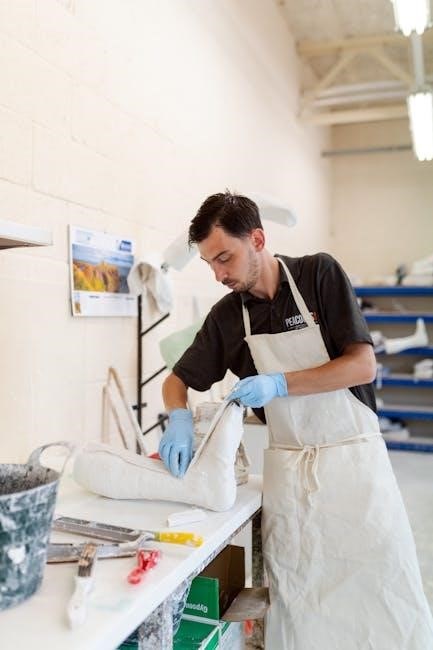
Product Reviews and Patient Feedback
Patients report high satisfaction with the TLSO brace, citing effective pain reduction and spinal stability․ Many recommend it for post-surgery recovery, praising its durability and comfort․
14․1․ User Experiences
Many users have shared positive experiences with the TLSO brace, highlighting its effectiveness in reducing pain and providing spinal stability․ Patients often praise its durability and comfort, making it a reliable choice for post-surgery recovery․ Some users mention that proper fitting and professional guidance are crucial for optimal comfort․ Overall, the TLSO brace is well-regarded for its ability to support spinal health and promote healing during recovery․
14․2․ Satisfaction Ratings
Satisfaction ratings for the TLSO brace are generally high, with most users reporting positive outcomes․ Many appreciate its supportive design and durability, contributing to an average rating of 4․5 out of 5 stars․ Patients often highlight improvements in spinal stability and pain reduction, though some note that consistent care and proper fitting are essential․ Overall, the TLSO brace is well-received for its effectiveness in aiding spinal recovery and providing comfort during the healing process․

TLSO Brace vs․ Other Spinal Braces
The TLSO brace provides comprehensive support for the thoracic, lumbar, and sacral regions, distinguishing it from other braces that may focus on specific spinal areas․
15․1․ Comparative Analysis
The TLSO brace offers comprehensive support for the thoracic, lumbar, and sacral regions, unlike other braces like LSO (Lumbar-Sacral Orthosis) or Jewett braces, which focus on specific areas․ TLSO is more rigid and provides superior immobilization, making it ideal for post-surgical recovery or severe spinal injuries․ In contrast, LSO braces are less restrictive and used for lower back issues, while Jewett braces are often used for vertebral fractures․ The TLSO’s full torso coverage ensures better stability and alignment, distinguishing it from other spinal braces in both functionality and application․